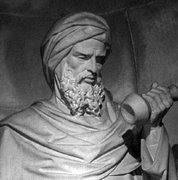Question
Should a religion be defined according to belief, ritual or their lived experience in everyday life?
Answer
TOWARDS AN ANTHROPOLOGICAL DEFINITION OF RELIGION
A. Introduction
Religion has already for a long period been a topic of anthropological study. It is Sir Edward Burnett Tylor (1832 - 1917), who is considered as the founding father of the anthropological study of religion. He saw religion as a way to understand the unexplainable (Stanley Tambiah 1990: 43). Nowadays the phenomena religion is seen as a cultural universal. But the concept religion certainly is not. In the nineteenth century French encyclopedias introduced the concept, that etymological can be traced back to the Latin `religare´, meaning to tie back. The anthropologists, in contrast with for instance theologians, do not ask whether there is divine truth in religion, but looks at the content of the religion. The view on religion is very well typified by the definitions used for the concept. Max Weber refused to define religion and didn’t take religion seriously (Bryan Turner 1974: 177) and that might indeed be the wisest thing to do. But I will take some anthropological definitions.
B. Definitions of Religion
In classical anthropology the definitions tend to focus on religion in `traditional´ societies. In this they put emphasis on the interaction with supernatural entities[1] Although subject of debate, religion in my view is very well possible without any supernatural beings, as Durkheim has debated in the case of Buddhism. The most important point of Durkheim is that religion can be seen as something sacred or as he puts it:
a unified set of beliefs and practices relative to sacred things, that is to say, things set apart and forbidden, - beliefs and practices which unite [into] one single moral community, all those who adhere to them(Durkheim 1995: xxxiv)[2] In Durkheim’s view, it is the authority and beliefs of a society that make things sacred or nonsacred (in his terminology, profane). Religion is consequently best understood neither as the result of supernatural revelation (although Durkheim recognizes that this may be a personal view held by the member of a religion), nor as an illusion or set of mistaken ideas (which might be the viewpoint of a skeptical outsider who does not accept the religious beliefs). Rather, religion is best understood as the power of a society to make things sacred or profane in the lives of its individual members. According to Durkheim, the social and religious power of sacredness are one and the same, since to hold something sacred is to demonstrate one’s commitment to and respect for the authority of one’s tradition.
What also is worth noting is that he takes religion as being both believe and practice. Furthermore Durkheim sees religion specific as something collective, while magic would be typified by individual practice. With his emphasis on a community as the basis of religion, that what often is referred to as shamanism would for instance not be considered a religion.
Another definition is by Sir Edward Taylor[3] He defines religion as “the belief in Spiritual Being”. Taylor’s treatment of religion is remarkably different from Robertson Smith’s sociological treatment of it in religion of the semites (1899). Smith sees totemism as the earliest manifestation of religion, in which the religion of the group or clan dominates individuals, and in which rite precedes belief, Taylor’s conception of religion put belief before rite, and saw its original basis in individual psychology. And from these basic premises he built up his scheme in evolutionary terms. Thus lower natural religion was transformed into higher revealed religion, distinguished by morality and ethics.
Taylor systematically built up other progressions: from the belief in souls to belief in spirit after death. By means of these progressions tylor constructed his (hypothetical) developmental scheme from animism to polytheism to monotheism, the last being the highest form.
Another definition is by Clifford Geertz. He defines religion as
(1) a system of symbols which acts to (2) establish powerful, pervasive, and long-lasting moods and motivations in men by (3) formulating conceptions of a general order of existence and (4) clothing these conceptions with such an aura of factuality that (5) the moods and motivations seem uniquely realistic (Geertz 1985: 4).[4] A little remark I can not keep to myself is that implicitly Geertz suggest that the religious experience is not true (an aura of factuality, it seems to be realistic), while in my view anthropologists shouldn't do any pronouncement about its truth, but need to be able to see it as the truth of the people studied. Like Durkheim who states: All [religions] are true in their own fashion. It is the task of the anthropologist to understand these fashions. As a critical point to Geertz´ definition that it lacks specificity. It wouldn't contain a directly observable, formal characteristic which is universally applicable as a means of identifying the religious. So it doesn't leave the anthropologist much to study, as I would interpret it. Hereafter they define religion themselves as:
All explicit and implicit notions and ideas, accepted as true, which relate to a reality which cannot be verified empirically (van Baal & van Beek 1985: 3)[5] So I must have misinterpreted their critics because here Geertz' symbols, moods, motivations and conceptions have been reduced to only notions and ideas. But there is also a similarity between the two definitions. In contrast with Durkheim and Tylor, both Geertz and van Baal & van Beek take non-empirically perceivable objects (notions and ideas; a system) as the core of religion instead of also having an eye for the practice. To me it seems to be this aspect can not be lacking in a definition, especially one of social scientists. Not only what is believed but also what is done marks the difference between religions. Some people might refer to their religion as mainly being the actions they are taking while others might emphasis the beliefs. So a definition should at least leave it open whether believe or action is taken as the core of the religion. In my point of view an anthropological definition of phenomena should somehow give a handle.
In other hand, Malinowski sharply separated off science from religion. Science was a “profane” activity, while religion grouped with magic belonged to the “sacred” domain. (Staley Tambiah 1990: 67)
This demarcation is basically opposed to Taylor’s scheme, which grouped magic with science as “pseudo-science”. Malinowski characterization of “science” was both simpliciticand generous when he actually credited the Trobianders with the possession of scientific knowledge (Stanley Tambiah 1990:67-68).
C. Conclusion
Above this a definition in my point of view should embrace the dimensions in which religion is expressed. A lot of times it is these dimensions that are referred to as religion. Further essential to me seems the relation with something spiritual, in the broadest sense, being a quality of a human individual or an entity on its own. So summing up a definition in the line of the given arguments should have eye for the cognitive as well as the per formative nature of religion. It should somehow incorporate the dimensions in which it is expressed and take awareness of the fact that it has something to do with the spiritual. With these ingredients one comes to something like:
A set of beliefs and/or actions to regulate and approach reality, expressed in: (a) doctrine, (b) philosophy, (c) myth, (d) symbol (e) ethic, (f) ritual, (g) matter, (h) experience and (i) social organization, in some way related to spiritual qualities, phenomena or entities.
In my point of view, to accentuate a point made before, religion is not something that can be studied, at least not by social scientist. It can only see expressions of religion, or to be more precise - but maybe a little confusing - the way it sees a human expression as the expression of what she refers to as religion. So only the expressions, of which certainly a limited number are included in the definition, can be studied. The point of it refers to as religion is that sometimes, because religion is not empirically perceptible, it is not clear whether an expression is religious. The field of ethics can supply us with a good example of this. The Moslems are forbidden to talk about bad things occurring in the Holy Book. One could look at this as a religious ethic: you should not talk about the bad things, but in the way described it maybe has more significance to look at it as socio-political ethic. For the sake of the Qur’an as a Source, there should be given a good image to the outside world, and there doesn't seem to be much religious about that.
[1] Guido Verboom, 2006, Religion, http://mongoluls.net/mongolian-religion/religiondef.shtml
[2] Emile Durkheim,1995, The Elementary Forms of Religious life, translator’s introduction, (trans.) Karen Field
[3]
[4] Geertz, C.1985. Religion as a cultural system. Anthropological approaches to the study of religion. M. Banton.
[5] Baal, J. v. and W. E. A. v. Beek, 1985. Symbols for communication an introduction to the anthropological study of religion. Cited in Guido Verboom, op. cit.




No comments:
Post a Comment